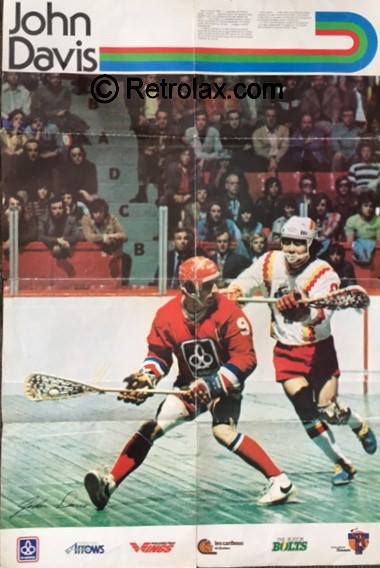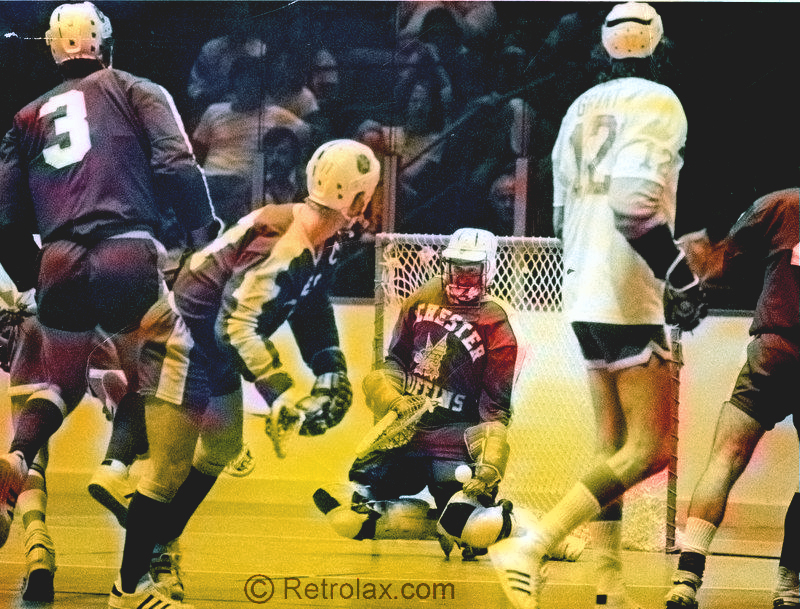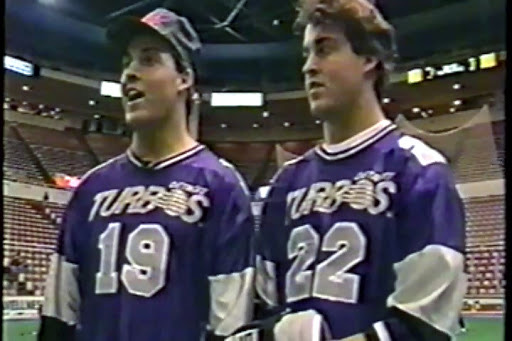There are a number of differences between box lacrosse and field lacrosse. Toronto Tomahawks of the National Lacrosse League have been fortunate to have four American field lacrosse players an their roster: Tim Havens, Gary Brezany, John Sheffield and Peter Graham.
All four admit they have had difficulties adapting to the Canadian game which utilizes the box, a’ smaller and more confined playing area. Boxla also is faster and greater emphasis is placed on running ability. Box lacrosse is also a more physical game. Field lacrosse allows 10 men on each team. In box, a club has six players, including a goalkeeper.
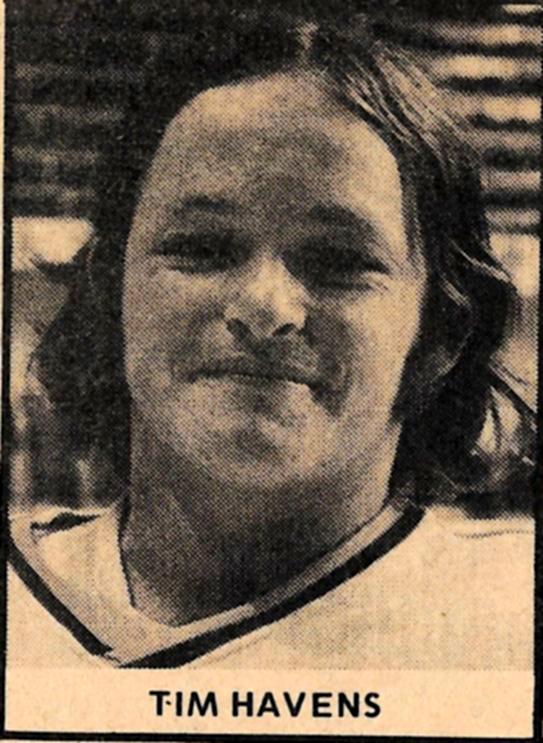
Box lacrosse also involves many of the complicated offensive and defensive patterns common to basketball, adopting both the man-to-man and zone systems. Havens, 23, from Corning, N.Y., played varsity lacrosse the past two seasons for Towson State College after a successful high school and community college career. Havens’ appearance is somewhat chunky, but his 5-8, 170-pound build has helped him withstand the tough going while on defence for the Tommies.
“For me, box lacrosse is twice as much a challenge as field lacrosse,” said Havens. “I have so far to go to match the stick-work of the Canadians and the checking is much tougher. ” Shooting is another area where Havens believes there’s room for improvement. “In field lacrosse the net is six feet square while in box it’s four. You’ve got to be pinpoint accurate to beat the goalie.” The offensive and defensive boxla patterns have also been a source of amazement for Havens. “Their sophistication is just something else. ” Havens has been very impressive in many of his 15 appearances (as of July 13.) He has scored three goals and set up seven.
His 21 penalty minutes proves he doesn’t object to mixing it up. A foot injury has kept him out of six games. Brezany, 20, from Mount Clemens, Michigan, is the Tommies’ youngest player. A 5-11 185-pound centre, he had only played lacrosse three years prior to coming to Toronto. “After the first practice I realized I couldn’t handle a stick as well as the others,” said Brezany. “The confined area of the box (200 by 85 feet) also bothered me. I was used to playing on a field that was 110 by 60 yards, with 10 men on each side. The adjustment was tough to make at first.” Last season he played for Wayne State which had 8-0 record.
Playing for Bishop continues to be an educational experience for Brezany. Bishop is a disciplinarian and has a fantastic knowledge of the game,” said Brezany. In 18 games to date, Brezany has scored five goals and has eight assists while picking up 12 minutes in penalties.
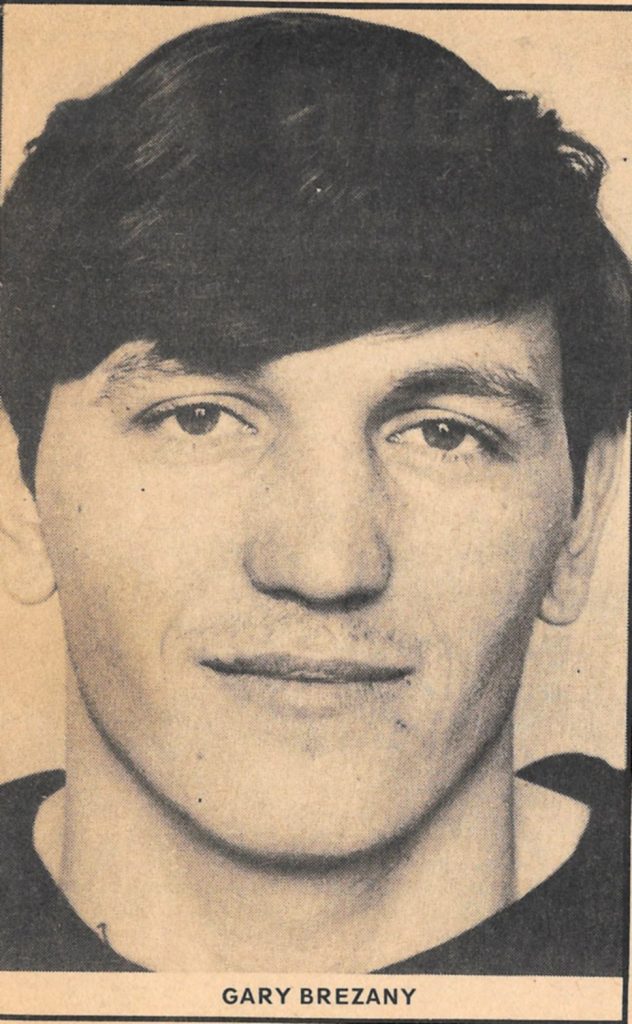
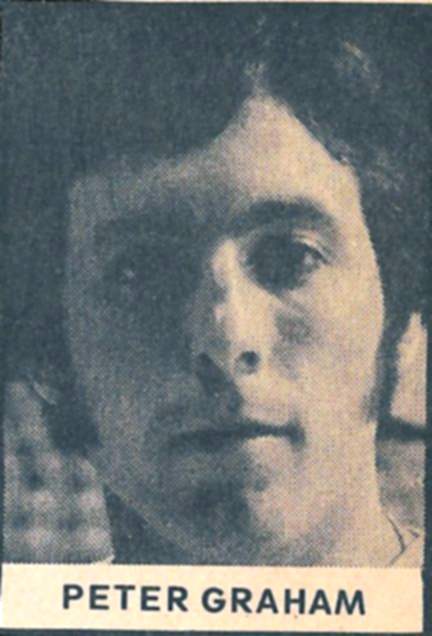
Graham, 22, who also hails from Corning, has had a unique problem in adjusting to the Canadian style of play because Bishop has converted him from a goaltender into a forward. “You’ve got to be able to anticipate what the opposing player is going to do and then react to it,” said Graham. “If you can do this successfully, two out of three times you are going to catch the other guy flat-footed. ” Graham’s size at 6-1 and 215 pounds is one of his greatest assets. A graduate of Cortland State where he played varsity lacrosse and football, Graham realizes his major stumbling block is his own indecisiveness to react in certain game situations. “I’m catching myself making the same mistake. I’m self-conscious about not being sure of myself.” said Graham. “I seem to be waiting for the opposition or someone else to make the first move. “All the time I’ve got to be anticipating, then reacting. But it will come, it’s just going to take time, that’s all.”

Sheffield, 22, was all-American, all-Ivy Leaguer with the University of Pennsylvania varsity lacrosse team last season. And he’s the first black to play pro lacrosse. The speedy 6-1 195-pounder from Detroit has put his size and agility to good use on the Tomahawk forward line. Sheffield played one year of freshman lacrosse and three seasons of varsity. He was also an offensive half- back on the football club and a member of the Penn wrestling team.
Prior to joining Tommies, his only exposure to box lacrosse was watching it on TV a few times. The overall speed of box lacrosse has made the biggest impression on Sheffield. “I can’t believe how fast a game it is,” said Sheffield. “You’ve got to be going full out, all the time you’re out there on the floor. “If you lose procession of the ball in the opposition’s end, you’ve got to drive hard and get back to cover your check, or you’re going to be caught out of position. “
Sheffield readily concedes you’ve got to be in top physical condition to play lacrosse. “It helps if you’re tough too. You can’t back down; if you do, you’re finished.” In Sheffield’s inaugural appearance against Maryland Arrows, June 25, he was officially welcomed to the NHL with a number of solid checks. He was also the recipient of a few cheap shots during the evening, including a cross check across the throat. To date he has been in two fights and handled himself extremely well. “They really like to ‘pop’ you in this league, and they’ll come at you from all sides. You need eyes in the back of your head. “
Sheffield, like his other American counterparts, is having some difficulty in reacting automatically to any given situation on the floor. He realizes he should be moving almost by instinct, knowing ahead of time what his opponent is going to do before he does it. “I guess it’ll take time and practice to become proficient at it, but I am determined to give it all I’ve got to make it happen, and I’m going to be a much better lacrosse player for it. “


